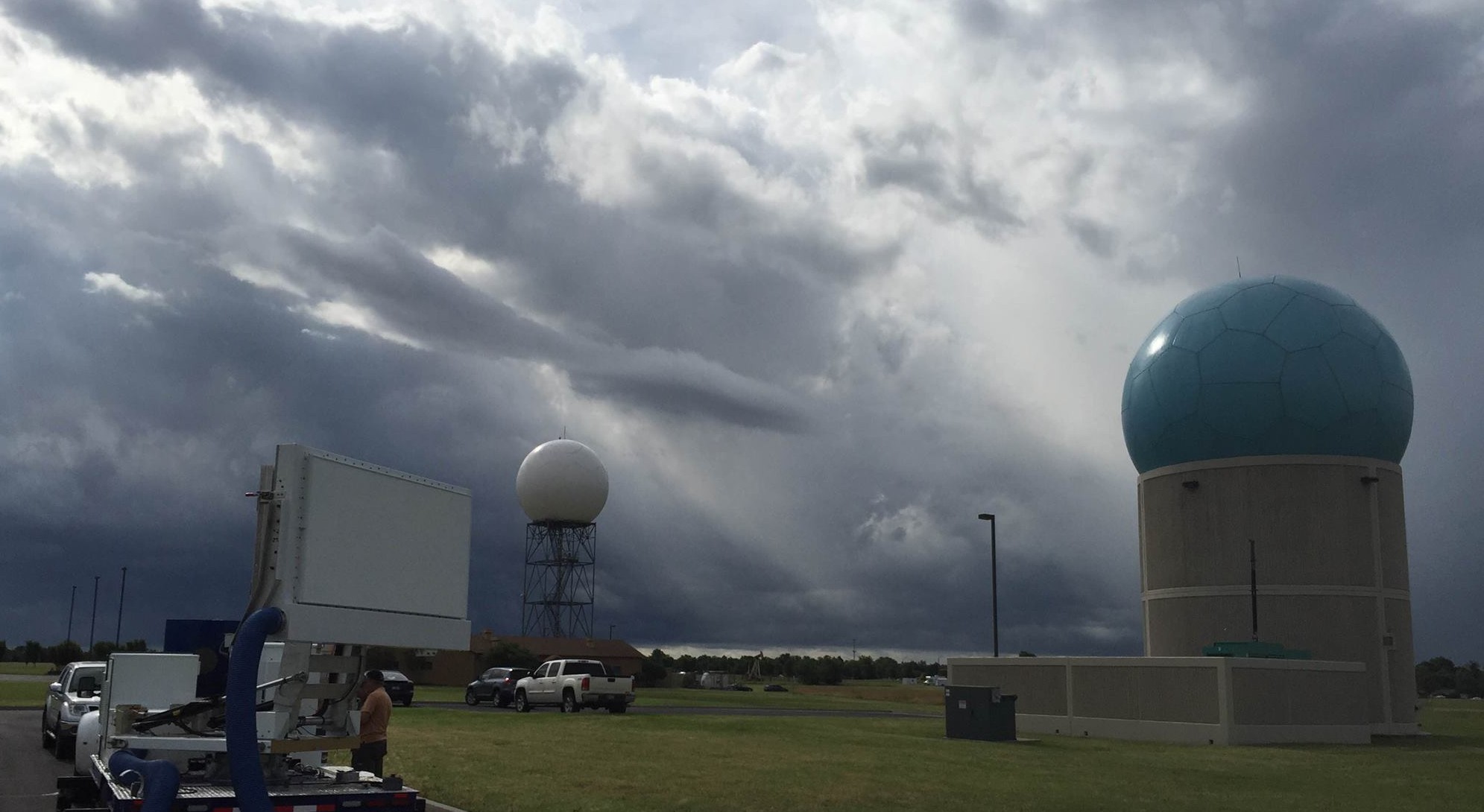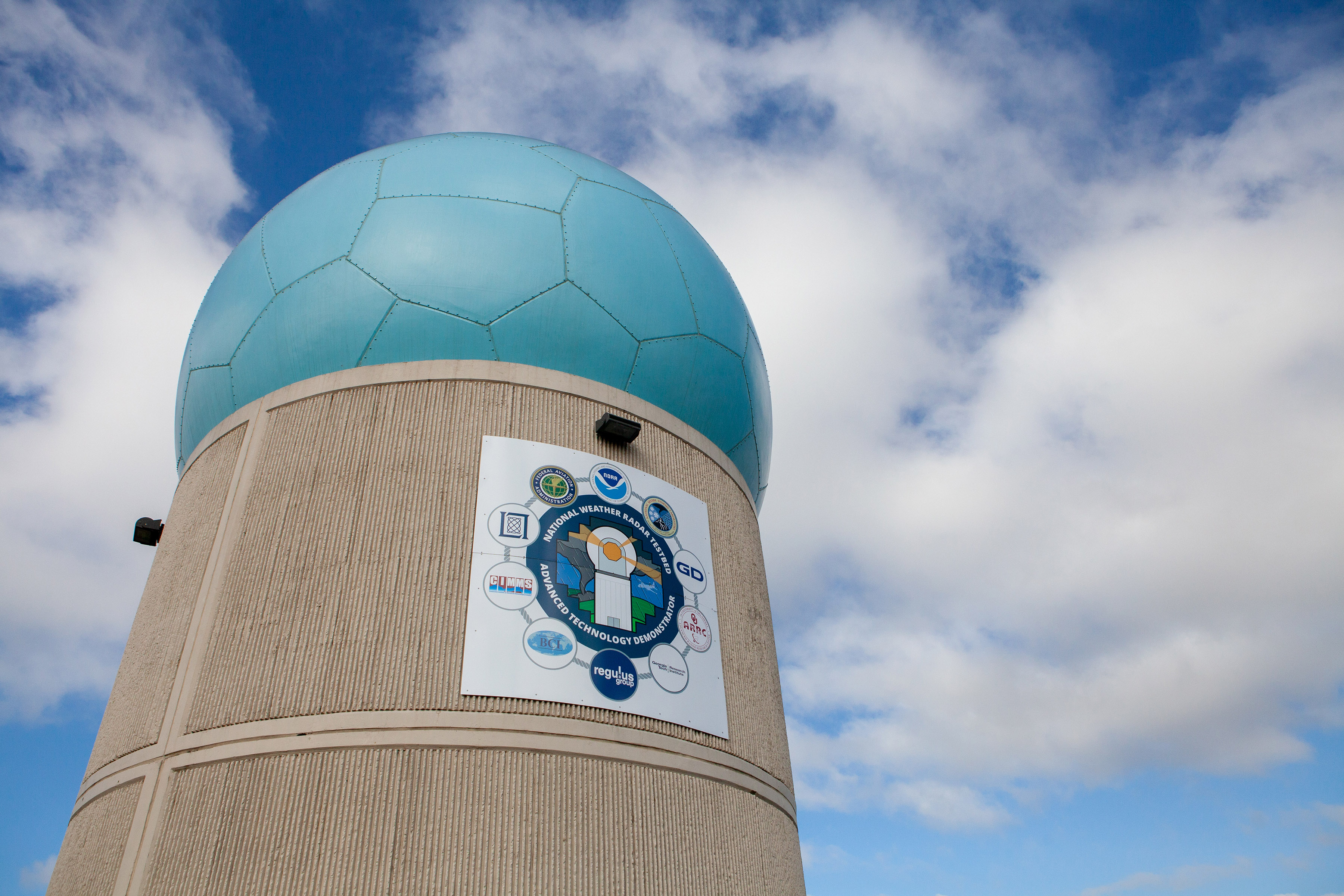“Power Steering – Multi-Mission Phased Array Radar” (MPAR) was the cover story in the November, 2007 issue of the Bulletin of the American Meteorological Society (BAMS). MPAR’s multi-mission function can sample weather, control air traffic, and track non-cooperative airplanes simultaneously.
The article, Agile-beam Phased Array Radar for Weather Observations, lead-authored by NSSL’s Dusan Zrnic, discussed how the electronically steered technology of phased array radar overcomes the limitations of conventional radar, which uses a spinning antenna.
Agile-beam phased array technology can satisfy demands that cannot be achieved even with improved WSR-88D technology. PAR can provide updates of volume scans at intervals of one minute or less, and be adapted to provide high-resolution scans to scrutinize and anticipate small-scale dangerous phenomena (intense vortices or wind shears), improving lead times for warnings.; An agile adaptive scan capability can also provide valuable data to storm-scale models, perhaps enabling warnings to be issued based on forecasts in addition to those based on extrapolation of observations. Improved data quality is another definitive advantage of MPAR.
The National Weather Radar Testbed (NWRT) was established in Norman, Oklahoma to explore and develop weather-related applications of PAR. Experiment results have already shown earlier detection of hazardous severe weather, aiding the forecast and warning decision process. Multi-function applications of the system for wind profiling, quantifying turbulence, aircraft tracking, and plume profiling (smoke plumes, volcanic ash, etc.) will be the subjects of further studies.
Background: Phased array radars are electronically steered and can send out multiple beams from a stationary antenna – a volume scan can take less than 30 seconds. PAR data collection capabilities improve resolution, accuracy and content of radar returns and, therefore, detection of weather phenomena.
Benefits: Provides improvements sought by the National Weather Service for service to the nation, and supports the NOAA Weather and Water Mission Goal to reduce loss of life, injury and damage to the economy; and provide better, quicker and more valuable weather and water information to support improved decisions.



